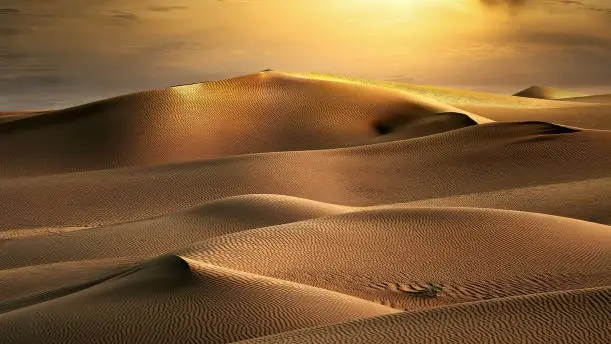Updated 27 August 2024 at 13:21 IST
The Harsh Realities of Rub' al Khali Desert’s Deadly Reputation and Recent Tragedy
The term "Khali" in the name of the desert signifies complete emptiness, with nothing in sight for miles.
- Utility News
- 3 min read

Earlier this week, a 27-year-old man from Telangana, India, tragically died in the Rub' al Khali desert in Saudi Arabia due to excessive exhaustion and dehydration.
Mohammad Shehzad, who had been working with a telecom company in the Al Hasa region of Saudi Arabia for three years, was among a group of colleagues who visited the desert. Their GPS device malfunctioned, their car ran out of fuel, and their phones lost signal.
Eventually, Shehzad found himself stranded in the perilous Empty Quarter, known as one of the most dangerous regions in the world.
Spanning over 650 kilometers, the Rub' al Khali, or Empty Quarter, is renowned for its harsh conditions and stretches across Saudi Arabia's southern regions and into neighboring countries.
Advertisement
Why is Rub' al Khali Called the Most Dangerous Desert?
The Empty Quarter, or Rub' al Khali in Arabic, is the world's largest sand desert, attracting the interest of explorers like Lawrence of Arabia and Wilfred Thesiger.
The term "Khali" in the name of the desert signifies complete emptiness, with nothing in sight for miles.
Advertisement
Wilfred Thesiger, a well-known explorer and writer, documented his experiences in the desert through several books. He explored the desert over two years and chose to walk barefoot despite the availability of shoes, preferring camels over cars. He spent years with the Bedouins, or "Bedu," of the desert, despite his affluent background.
Thesiger was born in 1910 in Addis Ababa, the son of a British Minister. His uncle, Frederic Thesiger, was the Viceroy of India from 1916 to 1921, during the period of the Jallianwala Bagh massacre led by General Dyer.
Thesiger once said, “I knew instinctively that it was the very hardness of life in the desert which drew me back there – it was the same pull which takes men back to the polar ice, to high mountains, and the sea.”
During World War II, far from the battlefields, Thesiger prepared to embark on a journey across the vast Arabian Desert. Without advanced GPS technology, he relied solely on the ancient Knowledge of the Bedouins to navigate and designed his own maps as he ventured through the undiscovered sands. Even today, it is not difficult to lose oneself in the desert.

Thesiger vividly described the desert’s difficult landscape: "Isolated dunes, two or three hundred feet in height, rose in apparently haphazard confusion from the desert floor. These enormous piles of sand, produced by vagaries of the winds which blew there, conform to no known rule of sand formation."
Fast forward eight decades, and modern adventurers continue to face challenges in this desolate expanse. Today, it’s not just the physical dangers that pose a threat—it’s also the lack of connectivity. One modern-day explorer, Ali, wrote in a blog, "…it's like cutting the umbilical cord, leaving you without food and oxygen. In today's world, we're so tethered to social media that we can't even sleep or wake up without scrolling through WhatsApp, Instagram, TikTok, Snapchat, YouTube, and other apps."
Despite advances in technology, the Rub' al Khali, with its extreme heat, treacherous navigation, shifting dunes, scarcity of resources, and utter isolation, remains one of the most daunting places on Earth. Out there, even the most advanced gadgets offer no guarantees.
Published By : Srujani Mohinta
Published On: 27 August 2024 at 13:19 IST
